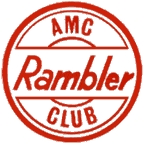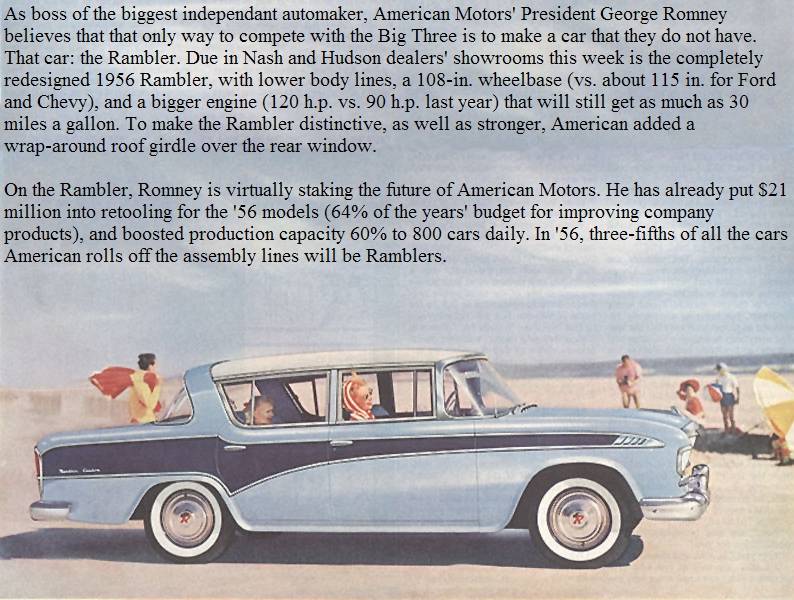Gamble on the Rambler 
Join
|
Home | Indy_07
| Meets | Store
| Chapters | Links
|
Photos | History
| Tech | SaleBut for the independents, competition from the Big Three is rough; and when American reported this week on its first full fiscal year since the Nash-Hudson merger, the balance sheet showed it. In the year ending Sept. 30, American lost $6,956,425. Stockholders found some cheer in the fact that it was only about half the 1954 losses (and it was well below Studebaker-Packard's $19,301,513 loss for 1955's first nine months). And 88% of American's 1955 losses came in the first six months, before savings made from the consolidation of Nash and Hudson.
Fruits of Merger. To cut production costs, American moved Hudson assembly lines out of Detroit and consolidated all finished-car assembly at Kenosha Wis. It adopted the Big Three's practice of using the same body shells for several lines of cars and consolidated Hudson and Nash field operations and warehousing.
One of the company's big expenses is buying V-8 engines from Packard for Hudson Hornets and Nash Ambassadors. Early next year American will put into production its own $10 million, V-8 engine plant to further cut costs.
The rest of American was doing well.
ReDisCo, the wholly-owned finance company with an annual volume of more than $100 million, was thriving, and the Kel-vinator and Leonard appliance lines were booming. Says Romney: "Our appliance business is up 30% this year." For the entire company, he is hopeful about the future. Though he expects to lose money in 1956's first fiscal quarter, he expects to go in the black in the second, stay there and show a profit for the year.
 Backing the gamble is Romney's conviction that the trend
is toward a smaller car—especially for a second car. His competitors
agree that cars may not get bigger, but do not think that a smaller car will go over.
Romney stands unshaken. He
has crusaded against the "big, gas-guzzling dinosaurs,"even
though he admits: "We make them too." In fact, Hudson
production for 1955 rose 30% to an estimated 24,700, and Nash 46% to
about 43,300. But the big seller is the Rambler. Sales jumped 161% to
87,600 cars. One good sign that it is fast catching on is its average
resale price, which topped the other low-priced cars all last spring
and summer. Next year Romney hopes to boost Rambler sales to 150,000,
its share of the market from this year's estimated 1.2% to about 2.2%.
Backing the gamble is Romney's conviction that the trend
is toward a smaller car—especially for a second car. His competitors
agree that cars may not get bigger, but do not think that a smaller car will go over.
Romney stands unshaken. He
has crusaded against the "big, gas-guzzling dinosaurs,"even
though he admits: "We make them too." In fact, Hudson
production for 1955 rose 30% to an estimated 24,700, and Nash 46% to
about 43,300. But the big seller is the Rambler. Sales jumped 161% to
87,600 cars. One good sign that it is fast catching on is its average
resale price, which topped the other low-priced cars all last spring
and summer. Next year Romney hopes to boost Rambler sales to 150,000,
its share of the market from this year's estimated 1.2% to about 2.2%.